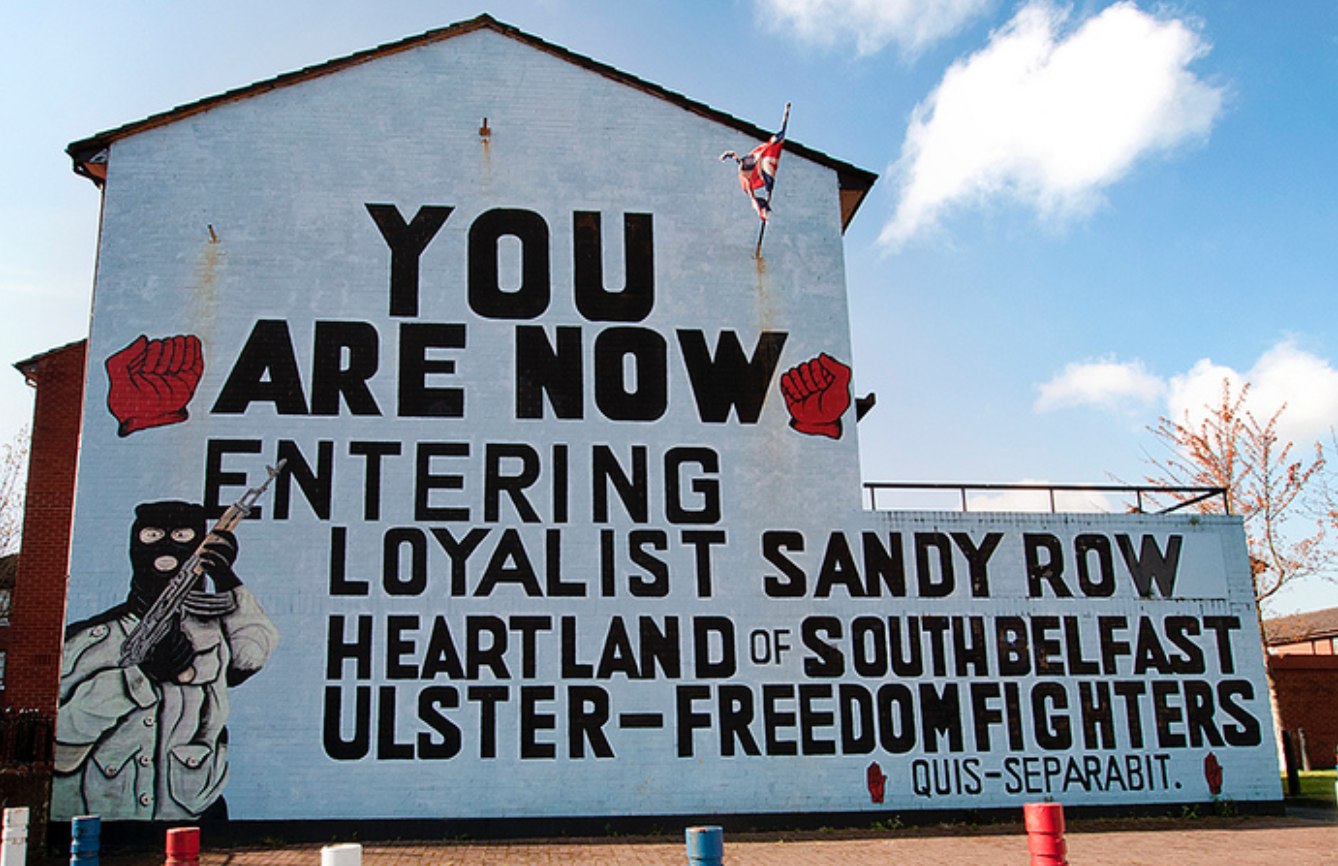Response Paper 3
When considering the question of who authorizes the creation of public art, there exists an expansive spectrum of circumstances under which this art can be created. Some public art, like the José Clemente Orozco murals at Dartmouth College, arises from private commissions with a specific intention in mind. On the other side of the spectrum, there exists unsanctioned graffiti work, like that of Banksy. In the case of Northern Ireland, both sides of this spectrum exist, as the authorization of public art shifted from unsanctioned chaos to official regulation through a government initiative, called the “Re-Imaging Communities Programme”. During the Troubles, which an era of violence between loyalist and republican citizens, much of the mural art created was unregulated and served as propaganda from one side or the other of the sectarian struggle that defined the times. Recently, however, the Irish government has become highly involved in the regulation of public art.
During the Troubles, the mural art of both loyalist and republican artists was political. The artists’ goal was to sway the audience of the image towards sympathy to the political agenda displayed in the work. Because the driving force behind the art was politics, artists took little care in authorization behind their work, resulting in most murals being erected quickly in graffiti-like style. As seen in Figure 1, this political overtness held priority over the style or quality of the art. This example clearly depicts the artist’s goal of overcoming British influence by voting for the republican political party, Sinn Fein. Another fuel for the circumnavigation of proper authorization to produce public art was the speed in which the artists decided their work needed to be created. Mural art began to serve as a form of communication between the two parties; it was another front to wage the war. This phenomenon is expressed clearly in Figures 2 and 3. The first piece, located in Derry, is one of the most iconic images representing the Troubles. This republican image signified to the audience that Derry was a republican hotbed and served as a clear statement of the political standing in the area. In
response to this, artists painted Figure 3, a declaration that the Sandy Row area of Belfast held strong loyalist views. The creation of this mural was meant to mirror that of the republican Derry artist. This sporadic creation of art and the highly politicized motivation of the artists caused the unregulated nature of public art seen throughout the Troubles.
Although a significant amount of public art during the Troubles was unsanctioned, this phenomenon has changed wholly over the last decade. Under President of Ireland Mary McAleese, the Arts Council implemented the Re-Imaging Communities Programme (Crowley 25). The goal of this initiative is to regulate the mural art of the Troubles to and ensure that images of public art evoke unification amongst citizens. This program works to repaint murals seen to be divisive with imagery considered to be more representative of a cohesive population. This endeavour is exemplified in Figure 4. The
iconic “you are now entering loyalist Sandy Row, has been covered and repainted with an mural of King William III, a image of British nationalism still valued in this sector of Northern Ireland, without the sense of division or paramilitarism represented by the Troubles. This program correlates to the political structure of modern day Northern Ireland. Now that the Troubles period has passed and there is much less unrest, the government has sought to regulate public art to create a sense of unified national identity. The implementation of this program speaks to the government’s recognition of the power of public art and the decision to censor much of these murals. This is a significant transition from the laissez-faire approach to art regulation during the Troubles.
As seen in the history of Northern Ireland, there are many paths in which public art can be authorized and regulated. In regard to mural art in Northern Ireland, ruling of art stemmed from changing political sentiment and intervention by the government. Although the political art of the Troubles represents a period Northern Irish history, the government deemed some of this imagery to be problematic, leading to this shift in the regulation of art. Much like public mural art in Mexico, the walls of Northern Ireland represent a canvas of art where regulation ultimately arose from the need to foster cultural identity.
Works Cited
Crowley, Tony. “The Art of Memory: The Murals of Northern Ireland and the Management of History.” Field Day Review 7 (2011): 22-49. Print.



